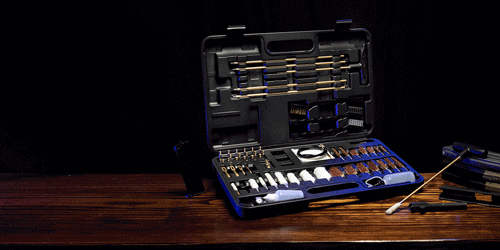Understanding the Basics of Ballistics
Ballistics is the science of projectiles and firearms, and it plays a crucial role in both shooting sports and hunting. For anyone interested in firearms, understanding ballistics can lead to improved shooting accuracy, better equipment selection, and a safer, more effective shooting experience. This article will guide you through the basics of ballistics and explain some essential concepts to help you understand how bullets behave in motion.
What is Ballistics?
Ballistics is the study of the dynamics of projectiles, particularly bullets or shells, when they are in motion. It includes analyzing the bullet’s flight, the forces acting on it, and the resulting trajectory. Ballistics is broadly divided into three main types:- Internal Ballistics: The study of what happens inside the firearm from the moment the firing pin strikes the primer until the bullet leaves the barrel.
- External Ballistics: The study of the bullet’s flight from the moment it exits the barrel until it reaches the target.
- Terminal Ballistics: The study of the bullet’s behavior upon impact with its target.
Each of these categories affects how bullets perform and is crucial in understanding overall shooting effectiveness and accuracy.

Internal Ballistics: The Start of the Shot
Internal ballistics refers to what happens inside the firearm before the bullet exits the barrel. When the firing pin hits the primer, it ignites the gunpowder in the cartridge, creating a high-pressure gas. This gas expands rapidly, forcing the bullet down the barrel. Key factors in internal ballistics include:- Barrel Length: Longer barrels can help with velocity, giving the bullet more time to accelerate.
- Caliber and Cartridge: Different bullet sizes and cartridges have different pressure levels and recoil, affecting speed and accuracy.
- Powder Charge: The amount of gunpowder affects the speed and pressure with which the bullet leaves the firearm.
Internal ballistics determine the bullet’s initial speed and stability, which in turn affects its path and behavior in flight.
External Ballistics: Bullet Flight Path
External ballistics covers the bullet’s journey from the barrel to the target. Once the bullet leaves the firearm, it encounters external factors that influence its trajectory and accuracy, such as:- Gravity: Gravity pulls the bullet downward, which causes it to follow a parabolic trajectory.
- Air Resistance: The bullet experiences drag from air particles, which slows it down over time.
- Wind: Wind can push a bullet off its intended path, requiring shooters to adjust their aim to compensate.
- Spin Drift: The rifling in the barrel causes the bullet to spin, which stabilizes its flight but also results in a slight lateral drift.
Understanding how these factors impact the bullet’s flight can improve shot placement, particularly for long-range shooting.

Terminal Ballistics: Bullet Impact
Terminal ballistics describes what happens when the bullet strikes its target. This is especially important in hunting, as understanding terminal ballistics can help ensure an ethical, humane kill. Terminal ballistics depend on:- Bullet Design: Different bullet designs (e.g., hollow points, soft points) behave differently on impact, expanding or fragmenting to maximize damage.
- Velocity at Impact: Higher velocity on impact usually means greater penetration and more forceful energy transfer.
- Energy Transfer: When a bullet hits its target, it transfers energy. The more energy transferred, the more damage to the target.
Choosing the right type of ammunition and understanding terminal ballistics can make the difference between a clean, effective shot and a less humane result.
The Role of Ballistic Coefficients (BC)
The ballistic coefficient (BC) is a measure of a bullet’s ability to overcome air resistance. Bullets with higher BC values retain their speed better, resist wind drift, and have a flatter trajectory. BC is crucial for long-range shooters who need to account for wind and other environmental factors over extended distances. Bullets with a high BC are generally more accurate and are preferred for precision shooting.

Calculating Trajectories and Zeroing a Rifle
Understanding ballistics allows shooters to calculate bullet trajectories and adjust their aim accordingly. Most shooters use a method called “zeroing” to align their firearm’s sights or optics with the bullet’s impact point at a specific range. Knowing how to zero your firearm and calculate trajectories for different distances is essential for accuracy in the field.
Real-World Applications of Ballistics Knowledge
Whether you’re a competitive shooter, a hunter, or simply an enthusiast, ballistics knowledge enhances your skill and safety. With a grasp of ballistics, you can:- Improve Accuracy: By understanding trajectory, gravity, and wind drift, you can adjust your aim to hit targets more reliably.
- Choose the Right Ammo: Knowing how different bullet designs perform helps you pick the best option for your purpose.
- Enhance Safety: Understanding bullet behavior helps you anticipate where a bullet might land if it misses the target.





